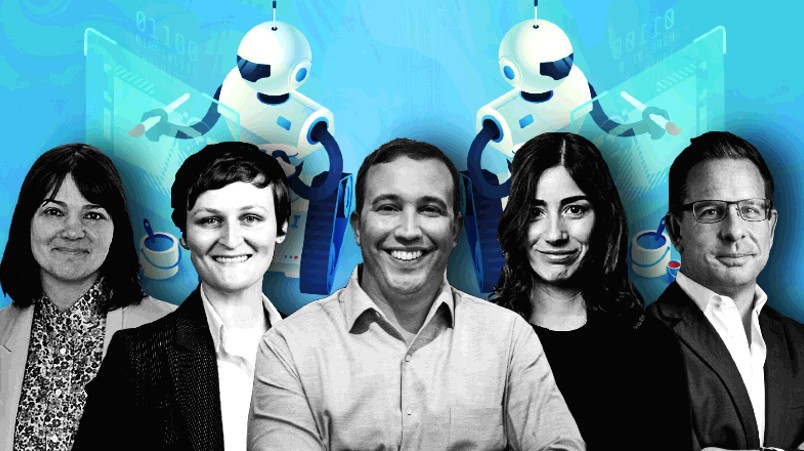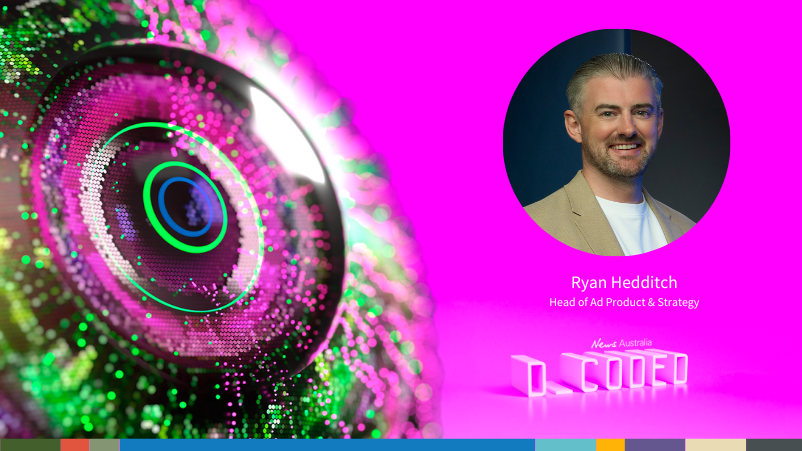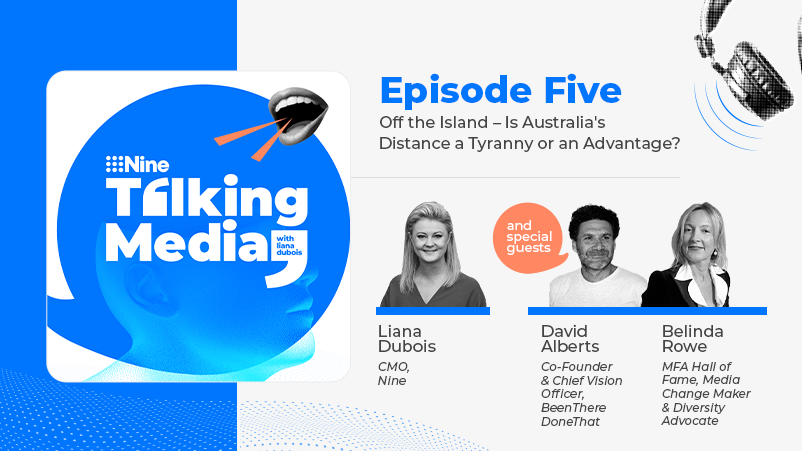Gen AI’s first wave already disrupting creative processes, powering personalisation, boosting performance; but agencies say it can’t do brilliance – and big brands only want big ideas

Sheryl Marjoram, Stela Solar, Kipp Bodnar, Carmela Soares, Will Easton
Harvard Business Review identifies three non-exclusive scenarios around the impact of generative AI on the creative process: think of these as 'everyone gets out alive', 'no one gets out alive', and 'only the very best of us get out alive.' Either way, marketing chiefs are already piling in. Hubspot CMO Kipp Bodnar told Mi3 the firm is saving masses of time by taking away the work that creatives and ops people hate – like managing creative assets – while deploying the tech on both ad and email creative is driving “meaningful improvements to conversion rates.” Meta is seeing the same thing, per Creative Strategist Carmela Soares. But AI-fuelled hyper personalisation also risks unwinding the kinds of powerful shared experiences brands need to build affinity says Harvard Business Review. And generative AI "is not designed for brilliance yet we have to engineer for brilliance", per DDB Group Sydney CEO Sheryl Marjoram who says she's never met a client who demanded a 'small idea.'
What you need to know
- Generative AI could upend both the creative process and the management of creative assets. Some brands are already generating efficiencies especially around marketing operations and digital asset management.
- Harvard Business Review identifies three non exclusive scenarios around the impact of generative AI on the creative process: think of these as 'everyone gets out alive', 'no one gets out alive', and 'only the very best of us gets out alive.'
- The ability to massively scale the creative output and deliver more effective advertising personalisation is especially attractive to marketers, and industry partnerships such as the WPP/Nvidia collaboration are already delivering the technical infrastructure.
- Internal research by Facebook suggests major upside to more diverse creative sets. A study across 2,700 tests revealed statistically significant improvements in CPA and a 32 per cent uplift in performance – and that was before Facebook unleashed its latest Gen AI initiatives.
- But does mass personalisation come at the expense of shared experiences of the brand? It's a risk, says HBR.
- DDB Sydney CEO Sheryl Marjoram says the agency is still working on collaborating with AI but is optimistic overall. However she says using Gen AI to remove too much friction from the creative process could be a mistake and warns Gen AI is not designed for brilliance "and we have to engineer for brilliance."
I've never met a client who just wanted a little idea. I've only ever met ones that want big ideas. The real truth is that as much as generative AI will help create a basic service level that we can all talk to, every single touch point, no matter where it is for a creative person, should be gold.
There’s a reason NVIDIA is worth more a trillion dollars this morning. And why it's worth four times more than it was a year ago. Its technology makes training the large languages models that underpin services like ChatGPT possible in ways traditional data centre CPUs don't, and can't. Few marketers, except perhaps those with a secret gaming addiction to Call of Duty or World of Warcraft will have paid the Nasdaq listed giant much heed over the last twelve months. That's set to change.
But investors in generative AI have certainly taken note, driving its value from $280bn a year ago to $1.1tn today.
That surge in value also reflects the speed at which generative AI has upended the technology sector and by extension the business processes – including marketing – that it supports.
In June, North Ridge Partners, a regional technology investment bank based in Singapore wrote that the company’s chips are uniquely well suited for organisations wanting to train AI models due to their large memory. But the Men in Black weren’t the only ones paying attention. Global Holdco WPP has partnered up with NVIDIA to supercharge its AI driven creativity innovations. In May the parties revealed a collaboration to build a generative AI-enabled content engine for digital advertising to help creative teams to produce high-quality commercial content faster and more efficiently.
“Generative AI is changing the world of marketing at incredible speed,” said WPP CEO Mark Read at the time. His counterpart at NVIDIA, founder and CEO Jensen Huang said the solution would help WPP deliver to brands, “the ability to build and deploy product experiences and compelling content at a level of realism and scale never possible before.”
It’s an example that Stela Solar, director of the CSIRO’s National Artificial Intelligence Centre says demonstrates how generative AI can help create sophisticated personalised campaigns, that meet the creative needs of brands while also protecting the interests of IP owners.
Solar focused on how the collaboration would help automotive advertisers create personalise advertising for vehicles.
She described how WPP and Nvidia began with a digital twin of car, and then used generative AI to produce different landscapes, different environments, and different colours for cars.
Solar told attendees at the recent Tech Leaders Forum, a technology media gabfest in the Hunter Valley, that the solution enables brands to automotive brands respond with greater dynamism.
“If I was living in rural environments, why would I care about how a car drives on a highway or in an urban setting, I want to see what it's like in the location that I need to drive in.”
She said the approach demonstrated the importance in the AI field of what she calls “grounding”.
“We talk about hallucination a lot with generative AI. But grounding techniques are increasingly becoming important to the outcomes and impact that generative AI systems can create. And the digital twin in this case was one of those grounding elements. The digital twin created something that was immovable that generative AI danced around and coloured in.”
But the WPP and Nvidia collaboration also did something just as important. “[They] worked with Adobe and Getty Images so the generative AI tool was fully licensed and didn't infringe on IP or copyright.”
We're already piloting some work internally that is saving us a lot of time and money around digital asset management by auto file naming, and file tagging. All of the things that make it much easier and clearer to manage and find your work.
Creative resurgence
A paper by Harvard Business Review in April this year identified three non-exclusive scenarios around the disruption of creative due to generative AI. Think of them in blunt terms as: all of us get out alive, none of us get out alive, only the best of us get out alive. Or in HBR's own words;
- people use AI to augment their work, leading to greater productivity
- generative AI creates a flood of cheap content that drives out human creatives
- human-made creative work demands a premium
The authors write that, “In the face of technological change, creativity is often held up as a uniquely human quality, less vulnerable to the forces of technological disruption and critical for the future. Indeed, behavioral researchers even call the skill of creativity a human masterpiece.”
But they say Gen AI threatens to upend the Creatives special status. Their first suggestion that AI will principally be used to augment work, leading to greater creativity, is supported by another Harvard study into knowledge workers (i.e. business consultants at BCG) that found staff using ChatGPT outperform on every measure – and underachievers received the biggest boost.
The second scenario involves machines monopolising creativity. “Here, human writers, producers, and creators are drowned out by a tsunami of algorithmically generated content, with some talented creators even opting out of the market,” they write.
Worse, they say that enhanced personalisation at scale threatens the shared experience of things like watching films, reading books, and consuming news (and to that you could add shared experiences of a brand).
"In that case, it will be easier to create politically divisive viral content, and significant volumes of mis/disinformation, as the average quality of content declines alongside the share of authentic human content. Both would likely worsen filter bubble effects."
But it’s the third scenario – where human made content demands a premium – that aligns to the current thinking of many marketers Mi3 has spoken with throughout the year about Gen AI, but who none the less welcome the automation of commoditised creative capabilities.
For instance, Dean Norbiato, GM Marketing, Kia told Mi3 earlier this year that he is keen to harness smarter machine capability to build brand and free-up thinking time across a lean team so that they can focus efforts on "the brand being more salient and cutting through?”
Norbiato said he hoped tools like ChatGPT accelerate the desktop research that goes into formulating briefs, or case studies, or determining things like the most prevalent influences in a certain category to enhance a brand or a certain campaign or product direction. “That breadth of desktop research just sucks your time having to do it. If something like that can be automated and done a lot quicker, that allows them to get the results and then start ideating themselves.”
And there is an important another context to the creative discussion in the wider field of marketing. The creative process itself is becoming more important again according to Kipp Bodnar, CMO of Hubspot a US-based CRM company with a $24bn market cap and revenues closing in on $2bn.
After almost three decades of digital marketing evolution — which introduced radical transparency to the previously opaque world of marketing ROI — the pendulum is swinging back towards creativity.
Bodnar cites the growing concerns brands have over data tracking and data privacy and suggests traditional direct response approaches are themselves becoming a bit more opaque as regulators tighten the rules.
“I think we're seeing a move back to creativity in marketing, which I think is a great thing. It’s for good for all of us,” he says.
Speaking to Mi3 at Hubspot’s recent Inbound customer event in Boston, Bodnar said: “When it comes to ‘creative creation’ what we're seeing right now is that dynamic image generation is huge.”
According to Bodnar, “We're able to create very contextual, dynamic images for ad creative or email creative and we are seeing meaningful improvements to conversion rates. It’s just so much better than a designer spending way too long designing something.
“We are seeing a tonne of stuff happening on the content creation side. On the writing side, it's largely used in research, outlining the foundational preparation either for the work that we're doing, or our customers are doing.”
However, Bodnar believes that many marketers may be underestimating the marketing operations benefits of generative AI.
“Managing your creative assets, things like file management, all the stuff that, quite frankly, creatives and operations people hate doing – Gen AI is going to transform the ability to do that much faster and much efficiently. We're already piloting some work internally that is saving us a lot of time and money around digital asset management by auto file naming and auto file tagging. All the things that make it much easier and clearer to manage and find your work.”
The more visually distinct the creatives, the higher the performance lift of diverse creatives over identical creatives: In fact, the lift in performance was 32 per cent when the creatives in the diverse cell were most visually distinct.
Creative diversity
Even before AI’s “Google moment” when generative AI burst into public consciousness with the release of ChatGPT in November last year, machine learning and AI was already increasingly woven into the fabric of the digital platforms marketers use every day, and already helping to deliver improvements in areas such as campaign performance optimisation.
Carmela Soares, Creative Strategist Meta says an internal Facebook study tracking the performance of thousands of campaigns globally has demonstrated huge improvements in CPA and reach of ads that have more diverse creative.
“In a recent study aggregating over 2,700 tests, we found that creative diversification resulted in a statistically significant improvement in advertiser CPA," she said in a briefing last month.
“The more visually distinct the creatives, the higher the performance lift of diverse creatives over identical creatives: In fact, the lift in performance was 32 per cent when the creatives in the diverse cell were most visually distinct.”
According to Soares, “Beyond that, brands using differentiated creative were also able to increase their incremental reach by 9 per cent, highlighting the potential of creative differentiation as a way to mitigate audience saturation.
“What do we mean by creative diversification here? It’s where within a campaign with the same or similar creative proposition [but with] different crafted executions across the board. This is proving to be way more effective for brands.”
The research cited by Soares did not involve generative AI, however the ability to mass produce personalised creative at scale is one of the early promises of Gen AI in creative, and the Facebook research provides evidence of the efficacy.
Either way, Meta is diving headlong into Gen AI, recently announcing a new set of capabilities developed out of its AI sandbox. These are designed to enable advertisers create multiple backgrounds to complement product images and tailor their creative assets for different audiences, as well as to easily adjust creative assets to fit different aspect ratios across multiple surfaces such as Facebook's Feed or Instagram's Reels.
It can now also generate multiple versions of advertising texts based on advertiser’s original copy, allowing advertisers to optimise based on audience segments.
Meta says most advertisers who participated in early testing reported saving time, while “half of them estimate that generative AI will save them five or more hours a week – the equivalent of one month per year.”
According to Keith Soljacich, EVP, Head of Innovation, Publicis Media Content Innovation in the US and a participant in Meta’s AI Sandbox project, “Ad creative development that is faster, smarter and integrated into the larger Meta ad platform will be a game changer.”
Meta also argues that generative AI enables advertisers to introduce new ad creative faster, but it acknowledges that there is still work to do on delivering outputs customised to every brands’ unique voice and visual style.
According to a company blog outlining its new generative AI capabilities, the digital giant acknowledges, “We’ll need to define new ways of partnering with brands and agencies to help train these models on brands’ unique perspective."
Meanwhile, Will Easton, Managing Director ANZ, Meta told Mi3, “We’ve heard promising feedback from advertisers in the US who tested these tools in our AI sandbox, and believe these tools have the potential to democratise access to creative resources for businesses of all sizes – making it easier for anyone to tap into creative best practices that drive campaign performance.”
Ultimately the human mind needs to come up with a creative idea, it needs to be curious and open, safe and excited and appropriately challenged.
A fraction too much friction
Sheryl Marjoram, CEO DDB Group Sydney, told Mi3 the agency is still working out how to collaborate with AI.
“Collaboration is something that we do. But it is always worth being careful when you work out the who and how. That’s because what we know only too well is any collaboration can be undermined by a lack of inherent trust.”
According to Marjoram, “I think there are varying degrees within the marketplace of how safe people feel with its unpredictability, its unreliability, its IP structures, who's going to end up owning what, what happens if there's a mistake, where does the law fall?”
As part of Omnicom, DDB benefits from partnerships with Adobe and Microsoft that will provide it access to emerging generative AI capabilities (Microsoft of a major investor in Open AI, and owner of ChatGPT) while Adobe has tackled the difficult issues of IP ownership with its Firefly release earlier this year (it also announced a major update this week).
But while there are many unknowns, she told Mi3 this doesn't make her any less excited about the possibilities.
Marjoram says that in these early days, Gen AI is typically turning up in the discovery and evaluation stages.
But while Gen AI is clearly removing friction from marketing operations – per Hubspot’s Kipp Bodnar – Marjoram cautions against letting technologies like Gen AI remove too much friction from the creative process. “That’s because friction and frustration and time are really important ingredients.”
She said she sees benefit in the ability of tools like ChatGPT to lift the performance of teams per the recent Harvard Business study into the impact BCG’s consultants, which noted a bigger positive impact on underperformers than the company's stars.
“Any process that normalises or brings that middle together can help create a common language or a common way, such that we can almost have almost an SLA on the output.”
But she warns that typically clients want much more.
“I've never met a client who just wanted a little idea. I've only ever met ones that want big ideas. The real truth is that as much as generative AI will help create a basic service level that we can all talk to, every single touch point, no matter where it is for a creative person, should be gold," said Marjoram.
“Nobody is going to want to be told just go and do a business-as-usual job there. It's not motivating, Ultimately the human mind needs to come up with a creative idea, it needs to be curious and open, safe and excited and appropriately challenged."
That’s where the big breakouts will come, not from mass standardisation, she suggests.
“It’s not designed for brilliance and we have to design for brilliance. We have to believe that there's brilliant, and we have to engineer for it.”
“As long as you remember that the primary part of being creative in a commercial context is to remember to ask the right questions – you've got to be curious in the right places.”
Marjoram says she is already seeing great examples of how generative AI is blending creativity and technology together.
As an example, she cites a campaign by Heinz where the Heinz team asked AI to draw ketchup to prove that Heinz is the most dominant sauce.
According to Creative Bloq an independent media site focussed on art and design, "Apparently, when the team fed the software random ketchup-related phrases, the results were overwhelmingly plastered with elements of Heinz' signature branding."
For her part Marjoram said, “I love that because it's not just technology for technologies sake. It's proving to the world that we (Heinz) are dominant. We're number one, we own the marketplace. And so it's a great question to ask. But it's only available to those who have an iconic cultural brand.”



